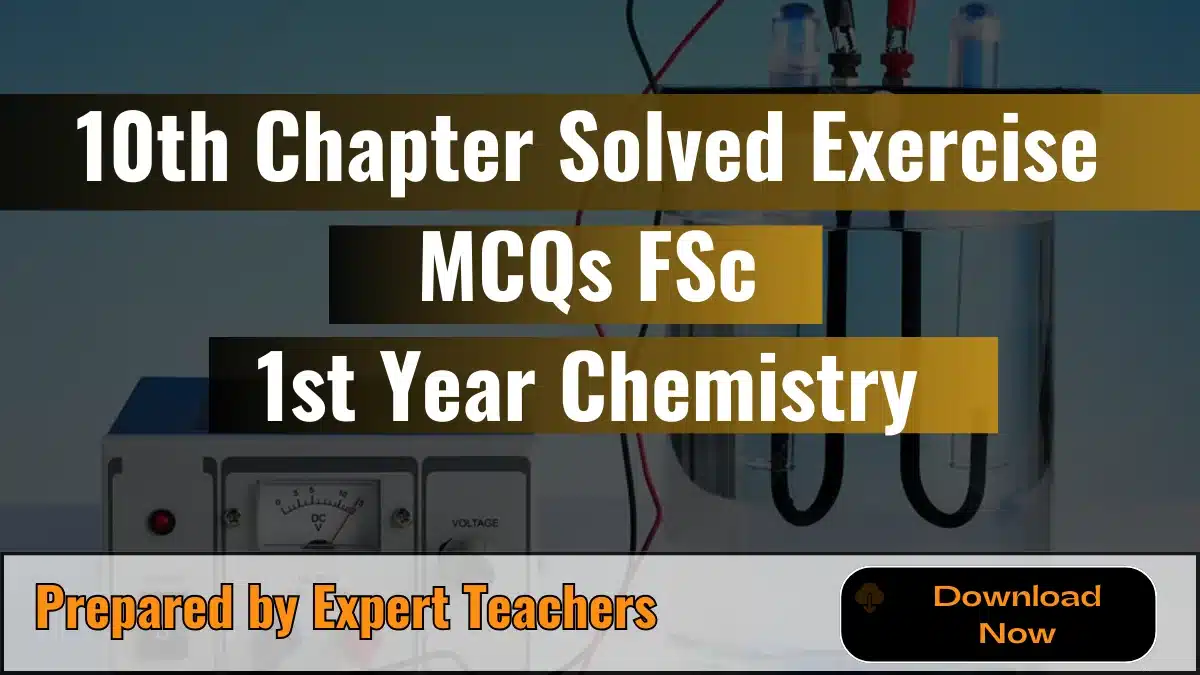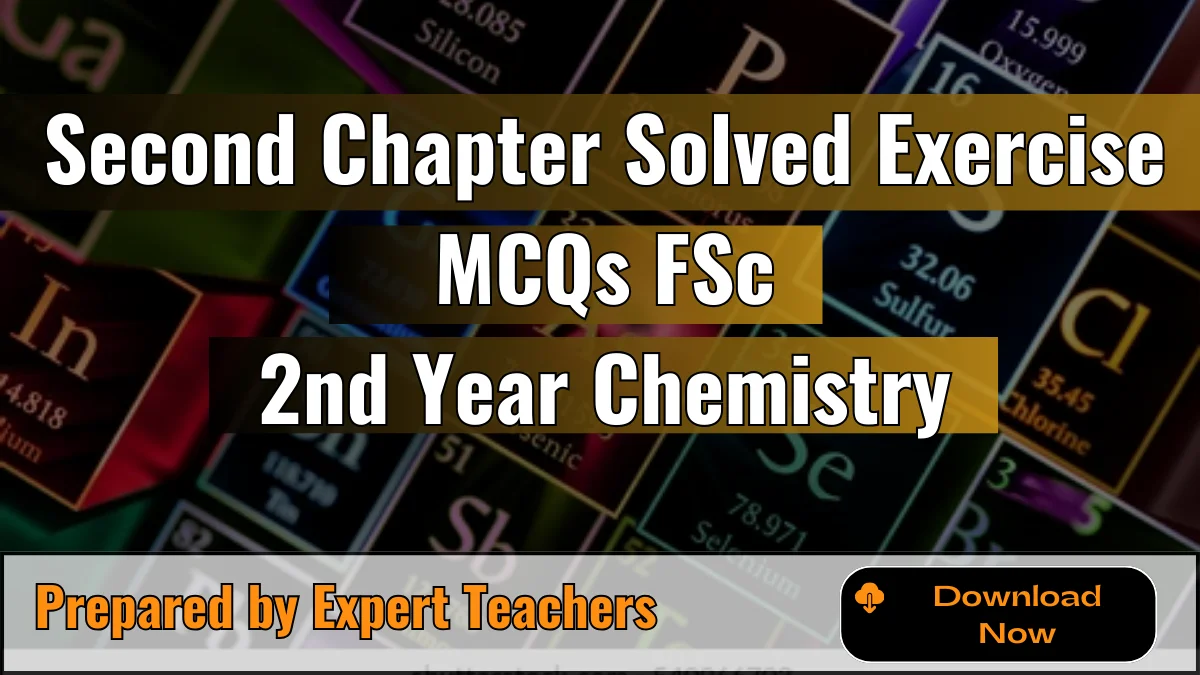Seventh Chapter Solved Exercise MCQs of FSC First Year Chemistry
The 7th chapter Solved Exercise MCQs of FSC 1st-year Chemistry offers a comprehensive collection of multiple-choice questions with answers. Each question is accompanied by a short explanation to clarify the correct choice. These solutions aim to assist students in exam preparation by simplifying complex concepts and building a strong foundation for success.
Seventh chapter solved MCQs with explanation
1. If an endothermic reaction is allowed to take place very rapidly in the air, the temperature of the surrounding air:
(a) remains constant
(b) increases
(c) decreases
(d) remains unchanged
Explanation: The correct answer is (c). Because an endothermic reaction absorbs heat from its surroundings. If this reaction occurs rapidly in the air, it will take heat from the surrounding air, causing the temperature of the air to decrease. As the reaction uses the heat energy from the surroundings, the overall energy in the surrounding environment decreases.
2. In endothermic reactions, the heat content of the:
(a) products is more than that of reactants
(b) reactants is more than that of products
(c) both (a) and (b)
(d) reactants and products are equal
Explanation: The correct answer is (a). Because endothermic reactions absorb heat, meaning the products have more heat content (enthalpy) than the reactants.
3. Calorie is equivalent to:
(a) 0.4184J
(b) 41.84J
(c) 4.184J
(d) 418.4J
Explanation: The correct answer is (c). Because 1 calorie is defined as 4.184 joules in the International System of Units (SI).
4. The change in heat energy of a chemical reaction at constant temperature and pressure is called:
(a) enthalpy change
(b) heat of sublimation
(c) bond energy
(d) internal energy change
Explanation: The correct answer is (a). Because enthalpy change is the heat energy released or absorbed during a chemical reaction when the temperature and pressure are constant. It helps us understand how much heat is involved in a reaction.
5. Which of the following statements is contrary to the first law of thermodynamics?
(a) Energy can neither be created nor destroyed.
(b) One form of energy can be transferred into an equivalent amount of other kinds of energy.
(c) In an adiabatic process, the work done is independent of its path.
(d) Continuous production of mechanical work without supplying an equivalent amount of heat is possible.
Explanation: The correct answer is (d). Because the first law of thermodynamics states that energy cannot be created or destroyed. Statement (d) contradicts this law, implying energy can be created from nothing.
6. For a given process, the heat changes at constant pressure (qp) and at constant volume (qv) are related to each other as:
(a) qp = qv
(b) qp < qv
(c) qp > qv
(d) qp = qv / 2
Explanation: The correct answer is (c).
- At Constant Pressure (qp): Heat is used to change both the internal energy and to do work as the system expands.
- At Constant Volume (qv): Heat only changes the internal energy because no work is done (the volume stays the same).
- Since more heat is needed to account for the work done when the volume changes, the heat at constant pressure (qp) is always greater than the heat at constant volume (qv).
7. For the reaction: NaOH + HCl → NaCl + H₂O, the change in enthalpy is called:
(a) heat of reaction
(b) heat of formation
(c) heat of neutralization
(d) heat of combustion
Explanation: The correct answer is (c). Because the reaction between NaOH and HCl is a neutralization reaction, and the change in enthalpy is referred to as the heat of neutralization.
8. The net heat change in a chemical reaction is the same, whether it is brought about in two or more different ways in one or several steps. It is known as:
(a) Henry’s law
(b) Joule’s principle
(c) Hess’s law
(d) Law of conservation of energy
Explanation: The correct answer is (c). Because Hess’s law states that the total enthalpy change of a reaction is the same regardless of the pathway taken, as long as the initial and final conditions are the same.
9. Enthalpy of neutralization of all the strong acids and strong bases has the same value because:
(a) neutralization leads to the formation of salt and water.
(b) strong acids and bases are ionic substances.
(c) acids always give rise to H⁺ ions and bases always furnish OH⁻ ions.
(d) the net chemical change involves the combination of H⁺ and OH⁻ ions to form water.
Explanation: The correct answer is (d). Because for strong acids and bases, the neutralization reaction primarily involves the combination of H⁺ ions from the acid and OH⁻ ions from the base to form water, releasing a consistent amount of energy.







Leave a Reply